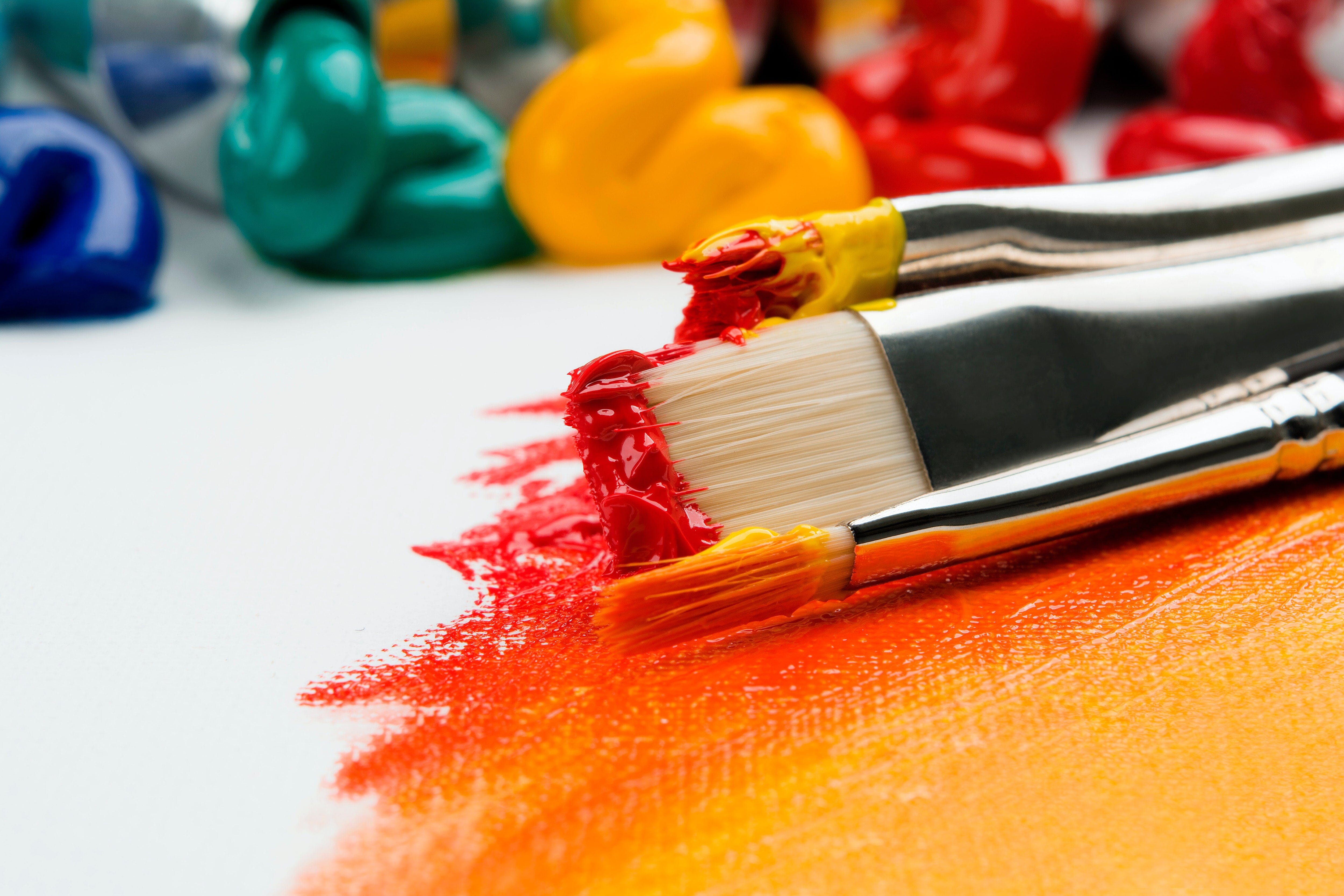When starting something new (like learning to paint) one of the first big hurdles is to get set up with the right gear. A new student needs good quality tools but they don't want to spend a fortune, or buy too many superfluous items. This whole task can be overwhelming, but don't stress; we're here to help aspiring artists choose the right brushes for their needs.
STUDENT: ...yeah okay, but the problem is I don't know what my needs are!
Good news! There are only a few considerations to take into account when selecting brushes. Just asking yourself these 3 simple questions will help to narrow down your options significantly.x
Question #1
Scale
The first hurdle is to determine what size of substrate you're working on. You may notice that some paint brushes have long handles and some have short handles; the reason for this is simple ergonomics.
| Brush Handle | Recommended Uses |
| Short |
|
| Long |
|
The logic behind handle length is pretty basic: If you're sitting on a park bench painting a postcard, a long handled paintbrush will likely poke you in the eye. Contrary, if you're standing at an easel, a longer handle on your brush allows you to stand back from your painting so you can see the whole picture as you paint. (Standing back also decreases the likelihood of stumbling over your easel legs and smearing your wet canvas)

Question #2
Media Type
The type of paint (or media) you'll be using can make a huge difference when it comes to choosing brushes. Here are some very general recommendations for brush hair types for specific media

| Media Type | Brush Type Recommendations |
| Acrylics |
|
| Oils |
|
|
Watercolours Gouache Drawing Inks |
|

Question #3
Subject Matter
Knowing what image you intend to paint will definitely help with brush selection because subject matter does impact your brush options. Some brushes are better suited to a specific subject matter than others.
(For a full description of each brush shape listed here, please see ALL ABOUT BRUSHES chart in the next section)
Also, ROUND brushes are not specifically mentioned in this chart because they are suitable for EVERYTHING, so get yourself a nice round brush to start with.
| Reference Image | Subject Matter | Scene Description | Brush Shape Recommendations |
 |
Cityscapes |
Buildings and street scenes |
|
 |
Landscapes |
Natural lands and flora, may include fauna and/or distant buildings, people |
|
 |
Skyscapes &Seascapes |
predominantly sky and/or sea |
|
 |
NaturePortraits |
Flora and/or fauna up-close (macro) |
|
 |
Portraits/Figurative |
A human as the central subject |
|
 |
Abstraction |
non-representational, conveying a feeling more than a literal scene |
|
 |
Illustration |
usually hard edged contours often including large fields of colour |
|
STUDENT: Who is Filbert? ...and what the %!$&? is a Cat's Tongue?!
Brush Overview
Well, now that we've thrown a bunch of weird words your way, here's a handy little guide to help clarify all the brush shapes and what kinds of strokes they make...

STUDENT: Can you please just tell me what to buy
ME: *sigh* ...Okay
What to Buy
If I have to recommend a few single brushes to get you started, I'd say ...
- a medium/small ROUND: good quality, size #6 or 8 should do
- a wider BRIGHT: for covering larger areas, a 3/4" or 1" should do
- a medium sized brush of your choice: 1/4" to 1/2" FILBERT or FLAT
- a FAN; for fun, and for playing with texture and blending
If painting is something that you're committed to learning then you may want to consider a buying a nice set of brushes.
The advantages to buying bushes in sets:
- A selection of shapes, sizes, and sometime even brush hair types. You may find that you absolutely love a brush you wouldn't have otherwise chosen
- A great value: Brushes are always less expensive when bought in sets





